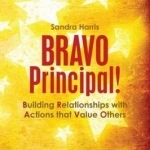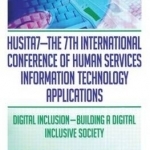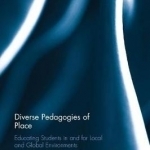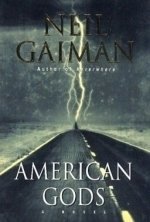Understanding Special Educational Needs and Disability in the Early Years: Principles and Perspectives
Book
This key text provides essential tools for understanding legislation, policy, provision and practice...

Bravo Principal!: Building Relationships with Actions That Value Others
Book
It is only through effective leadership actions that principals can become outstanding leaders. By...

HUSITA7- The 7th International Conference of Human Services Information Technology Applications: Digital Inclusion - Building a Digital Inclusive Society
C.K. Law, John Yat-Chu Fung and Yu Cheung Wong
Book
In today's information society, to make a real and lasting impact on human welfare takes...
RavenclawPrincess913 (253 KP) rated A Multitude of Dreams in Books
Sep 10, 2023
Author: Mara Rutherford
My favorite read of the year would be A Multitude of Dreams by Mara Rutherford. In the beginning of this book it takes place during the after math of a horrible plague called the Mori Roja which basically causes the patient to bleed out and die. Only ways people can survive the mori Roja are to die and be reborn, never come in contact with the plague or be immune.
Princess Imogen of Goslind has been locked in the palace with many other higher born citizens for the past four years during the plague she wants to be set free same with many others but the king will not allow that. After Nico impersonating a prince shows up they quickly learn being locked up is what helped them survive so long but it is no longer possible when the food runs out.
When Nico realizes that Lord Crane is a reborn and learns of his plans he decided to impersonate a prince who died on his way to meet the princess for a marriage agreement. He died by a reborn. He does this to try to warn and save the people of the palace but he has no success when Lord Crane and other reborns invade the palace killing many.
This being the best book I read of 2023 I am having a hard time choosing just one part I loved the most in it. I did enjoy that Princess Giselle got the karma that was coming for her it was one hundred percent deserved. The story was really well written and extremely hard to put down. Another part I loved were all the moments between Jocelyn and Princess Imogen. Honestly only part of this book I disliked was that Jocelyn and Imogen didn't end up together. I thought they would because they were giving off more that friend vibes with the kisses and stuff.
When it comes to the characters my favorites were Jocelyn and Princess Imogen. I loved them from the beginning. One character who gave bad vibes and I knew couldn't be trust was Lord Crane. I could just tell there was something up with him. On the other hand Nico and Colin were both very trustworthy from the beginning. I didn't like Giselle, Henry or Branson either. Princess Giselle I could tell she was a backstabber. Henry I could tell he had an alternative motive and couldn't be trusted. Same with Branson. This book had a very good character development.
I recommend reading this if books based during or after a plague interests you. I also recommend if you enjoy books about vampires.
Ornamental Palm Horticulture
Timothy K. Broschat, Alan W. Meerow and Monica L. Elliott
Book
Comprehensive in scope and based on research from worldwide sources, Ornamental Palm Horticulture...

Japanese Design: Art, Aesthetics and Culture
Book
**Winner, Choice Magazine Outstanding Academic Title 2015** This Japanese design book presents the...

Diverse Pedagogies of Place: Educating Students in and for Local and Global Environments
Book
Diverse Pedagogies of Place presents eight original place-responsive pedagogies that address a...
Hokusai X Manga: Japanese Pop Culture Since 1680
Sabine Schulze and Nora von Achenbach
Book
Anime and manga are powerful pop-culture phenomena, capturing people's imaginations in the pages of...
Rachel King (13 KP) rated American Gods in Books
Feb 11, 2019
While the names of classical mythology fit into the category of the Old Gods, there are New Gods that have taken root in America, born from cultural obsessions that have evolved and devolved over the years, such as railroads - a man dressed as a railroad conductor, television - a voice talking through Lucille Ball on a rerun of I Love Lucy, vehicles - stocky men that seemed to resemble vehicles themselves, and internet - a short, nerdy, nervous kid, among other American fixations and stereotypes.
In addition, one of the scenic devices used throughout the plot is what Gaiman's characters describe as places of power - side-of-the-road dives that road-trippers visit for no apparent reason, such as a place boasting the largest doll collection in America or the biggest wheel of cheese. And no, Disneyworld is not one of them.
One of the things I found interesting about this Gaiman-born world is that the Old Gods only exist in the New World when regular people travel from other countries and bring their memories and practices with them, even when they don't intend to stay themselves. The gods are "born" from these average people, and even though they can be killed by others, they don't die otherwise, but instead alternately starve or thrive based on the behavior of the people who live and die in the New World. They all have counterpart manifestations of themselves in the countries they are pulled from, but one's existence does not affect the other - though they do seem to be aware of each other.
All of this is merely the background of the main plot, which centers around the activities and travels of a seemingly mortal man with a single name, Shadow. I never did "get" the one-name thing, but whatever. Through Shadow's narration, the reader learns of an impending storm - a battle between the Old Gods and New Gods, the former fighting for survival and the latter fighting for dominance. Shadow works for a mysterious "Mr. Wednesday" and is randomly haunted by his dead wife, Laura, but otherwise seems to have little drive of his own for most of the book. In fitting irony, he has his own brand of "magic" - an obsession for coin tricks to pass the time from his days spent in prison - which I could never really follow the descriptions of.
To be completely honest, I truly did enjoy this book, though I am struggling to say exactly why. Perhaps I was fascinated by the "shadowy" way that Gaiman told the story, or how he developed this over-the-hill world of gods and goddesses that better resembled America's middle and poor classes' struggles for survival, money, and influence. Some of the personal touches that Shadow's character added to the plot made him at times surprisingly endearing. In addition, the way that Shadow seemed to address the reader at the very end of the book was so satisfying that I laughed out loud and had to read it again several times. Something about that just brought the book to life for me and help me to fully appreciate the versatile style of Gaiman. This is one of those books you don't have to fully understand to fully appreciate.
Alice (12 KP) rated Of Sand and Malice Made (The Song of the Shattered Sands, #0.5) in Books
Jul 3, 2018
Ceda is 15 when the story begins and it starts off with her picking a fight with someone who – in the beginning – gives off a secondary character kinda vibe, almost filler but ends up being an integral part of the story later on. Brama had apparently stolen a purse that Ceda wad tasked to collect and Ceda decided she’d rather fight him than find the purse. That came across as quite juvenile particularly when her “boss” pointed out the same thing that I thought.
The story progresses pretty slowly for the first 60 or 70 pages where it does eventually improve but there’s a distinctly Middle Eastern vibe to this story. It’s sort of like a twisted sci-fi type of Aladdin story.
The pit fighting is few and far between and for a character who is called the White Wolf I would have preferred a little more fighting and a little less talking but the steroidal like properties to the flower petals is amazingly unique, I don’t think I’ve ever read that in a book so kudos to that.
The writing style was a touch different to what I’m used to but it was written quite well. As mentioned above there was a distinctly Middle Eastern vibe to this story and the descriptions of the desert and other areas in Sharakhai were beautifully written and it almost made me feel like I was back on holiday in Egypt which was a lovely experience.
The concept of Rumayesh was really good – a semi corrupt demonic type being who overtakes the body of her “chosen” one – and Rumayesh took an awful big shine to Ceda which is where the story basically followed. Now having not read Twelve Kings I am completely unable to comment on how the story progresses in that book but the plot line in this novella was drawing to the mind and the descriptions of what was happening were very good.
Apart from my initial dubious feeling and the subsequent lack of pit – fighting for a story based on a pit-fighter I did enjoy Of Sand and Malice Made but I don’t think that it is entirely my thing and I don’t think I’d be continuing the story anytime soon though I do look forward to seeing where this novella leads.

